Imagine transforming your living space into a serene sanctuary that exudes tranquility and natural beauty. Bali interior design offers just that, blending traditional craftsmanship with modern aesthetics to create an oasis of calm in your home. Whether you’re yearning for the rustic charm of bamboo furniture or the elegance of hand-carved wooden accents, Bali-inspired interiors promise to transport you to a tropical paradise without ever leaving your doorstep.
You’re probably wondering how to incorporate these exotic elements into your own home without overwhelming your existing décor. The secret lies in balancing simplicity with sophistication, using natural materials and earthy tones to create a harmonious environment.
In this article, you’ll discover practical tips and inspiring ideas to bring the essence of Bali into every corner of your living space. Get ready to embark on a journey that will redefine comfort and style, making your home not just a place to live but a retreat for the soul.
13 Bali Interior Design Ideas And Styles To Create Serene Spaces with Natural Materials
#1. Bali Walk-in Closet
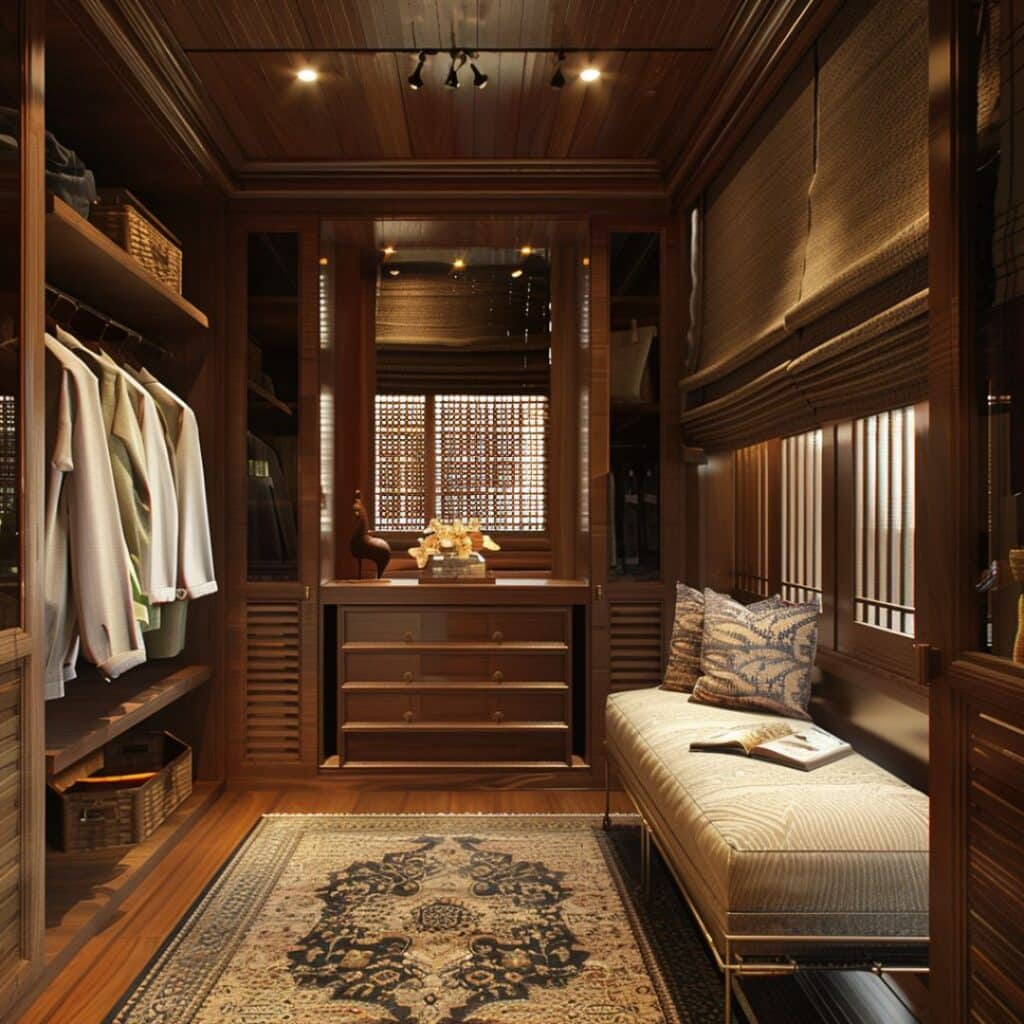
#2. Bali Studio Apartment
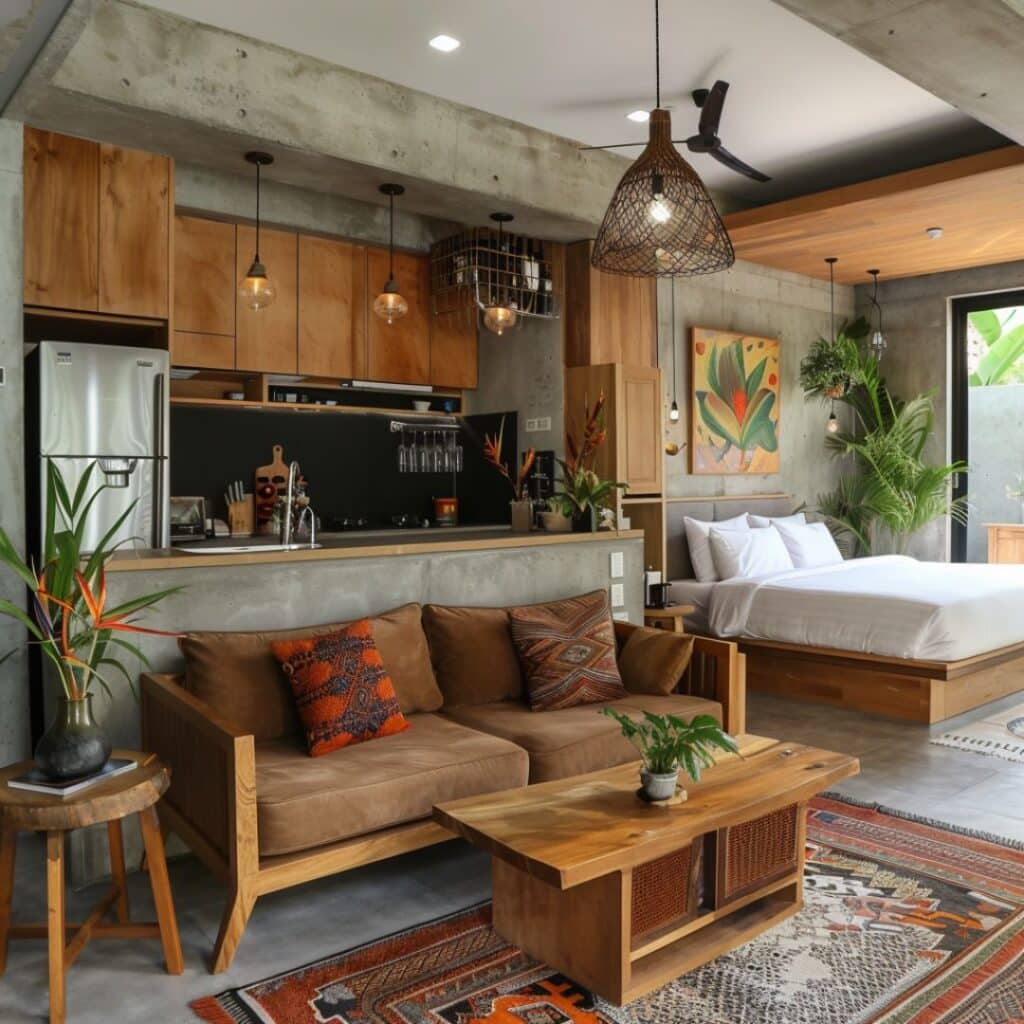
#3. Bali Open Kitchen Living Room
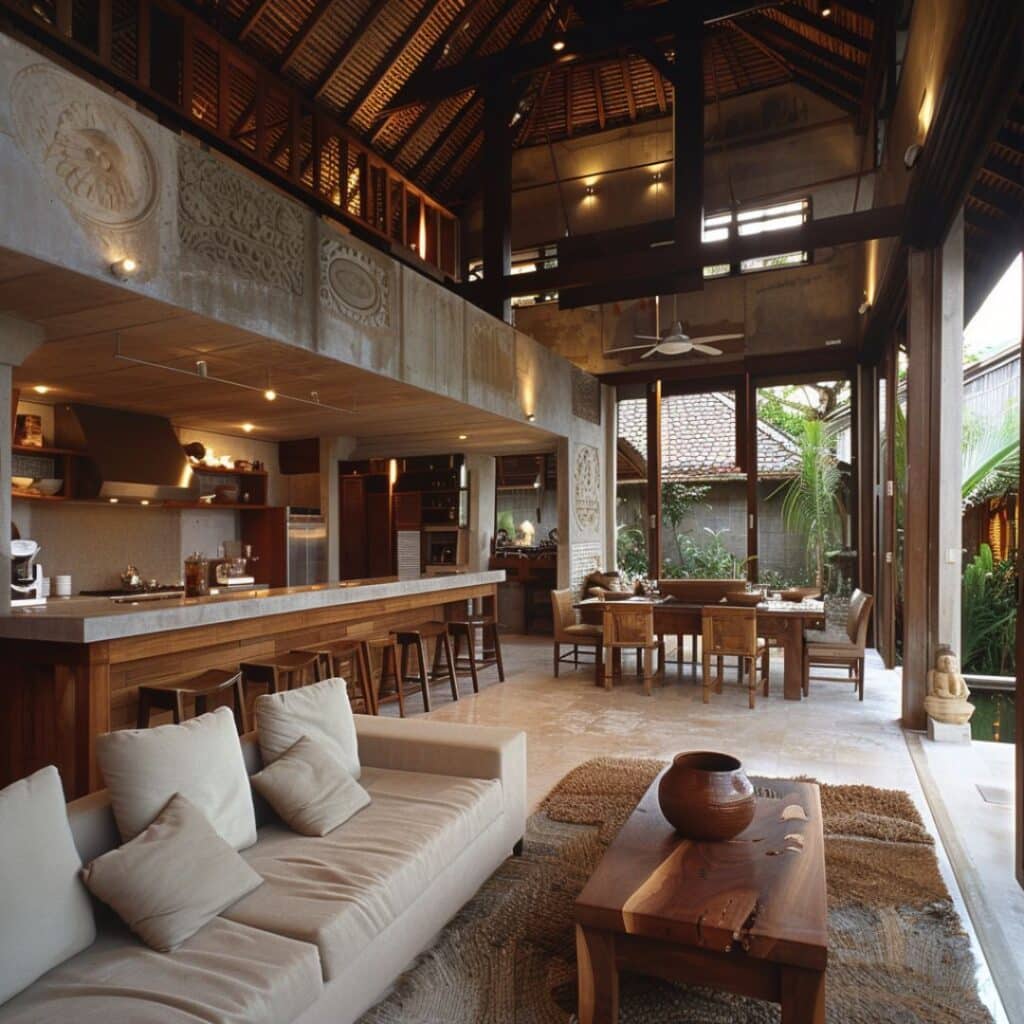
#4. Bali Living Room
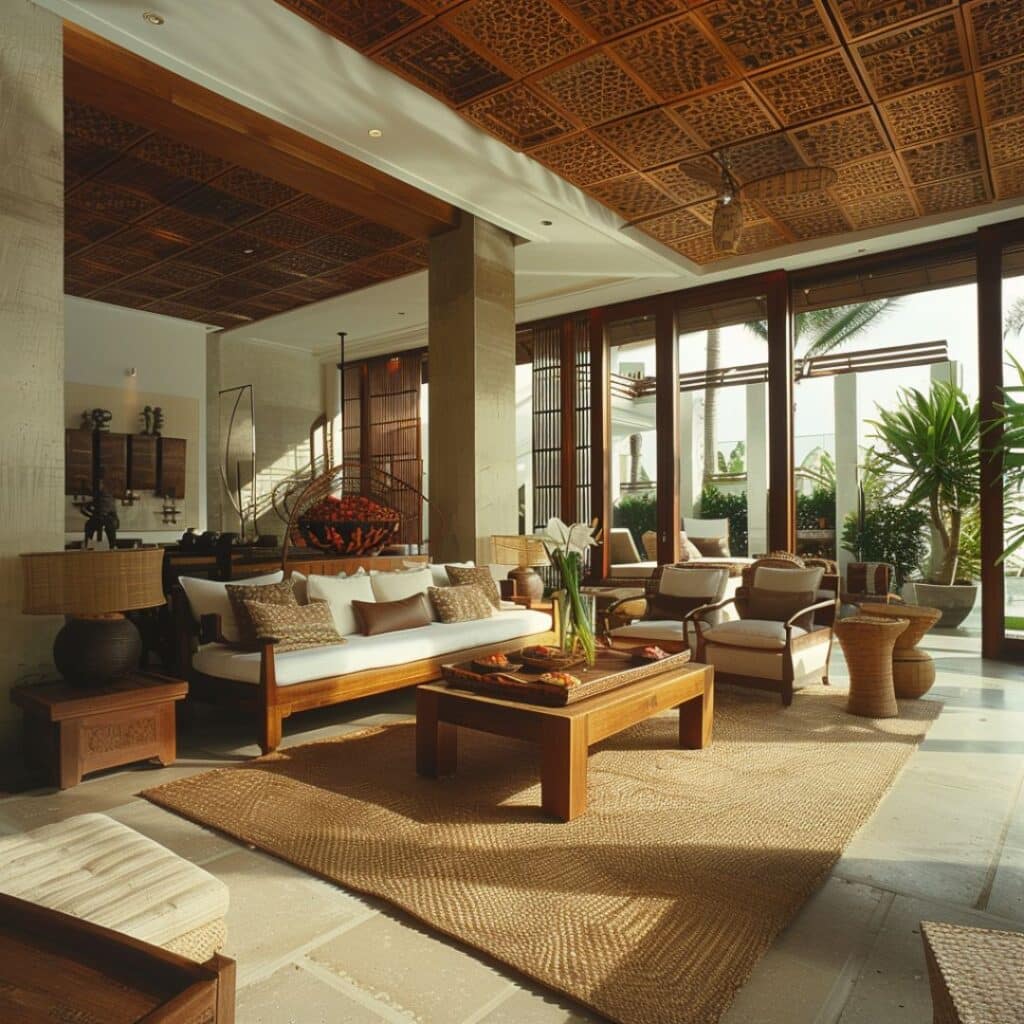
#5. Bali Laundry Room
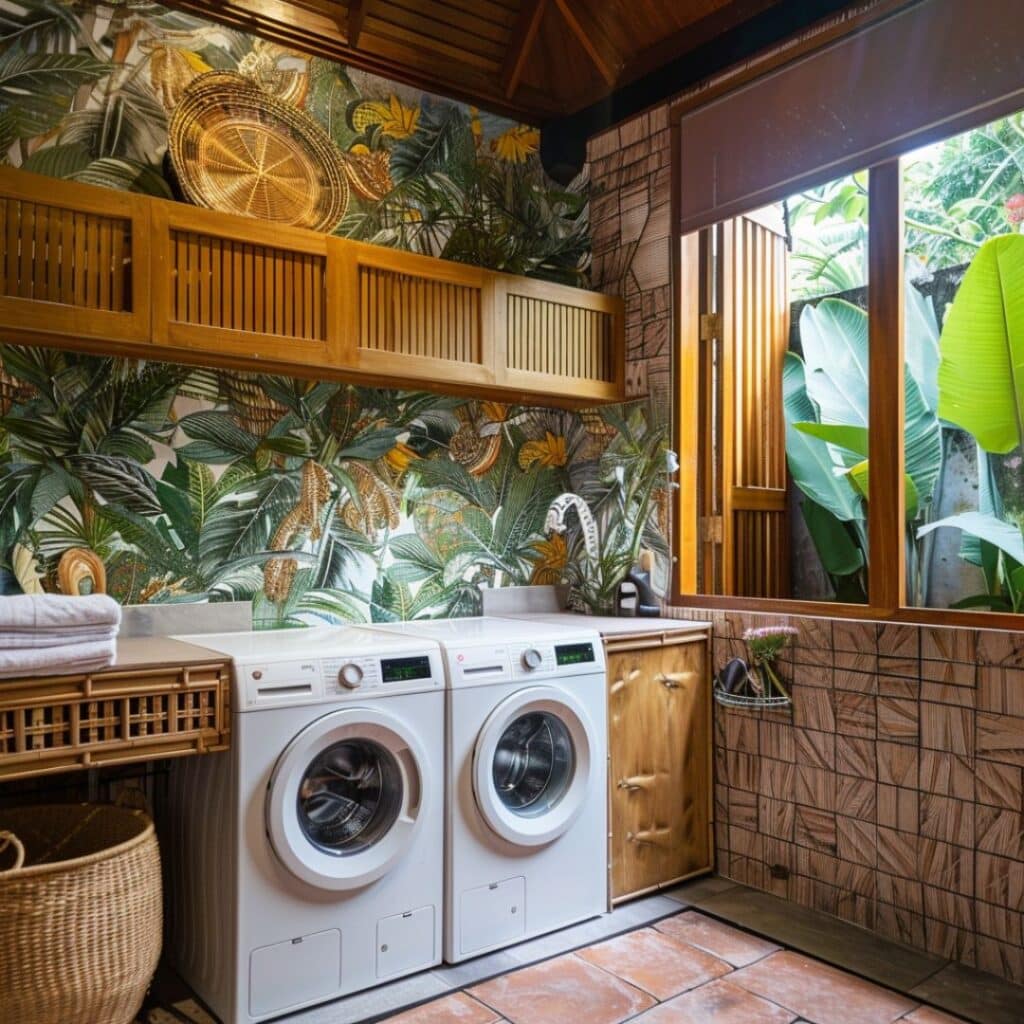
#6. Bali Kitchen
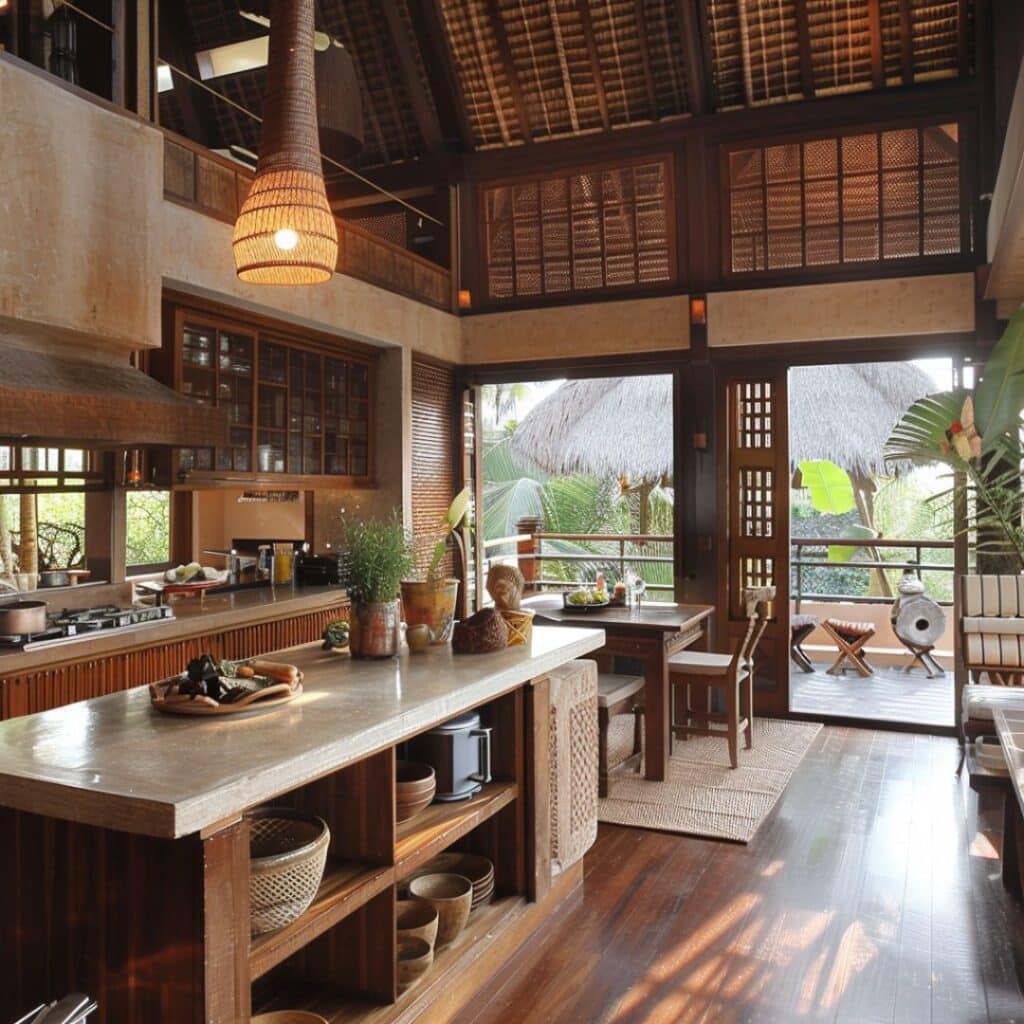
#7. Bali Kitchen Interior
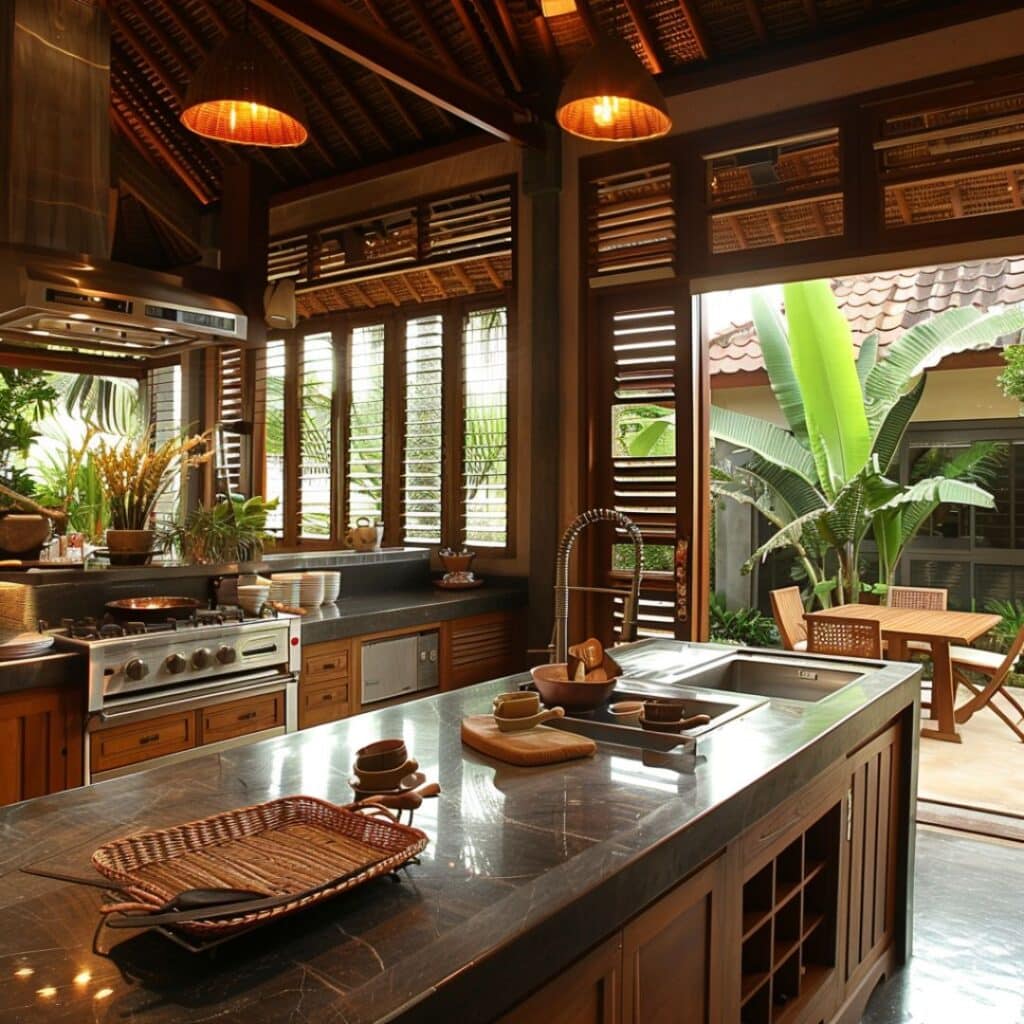
#7. Bali Kids Room
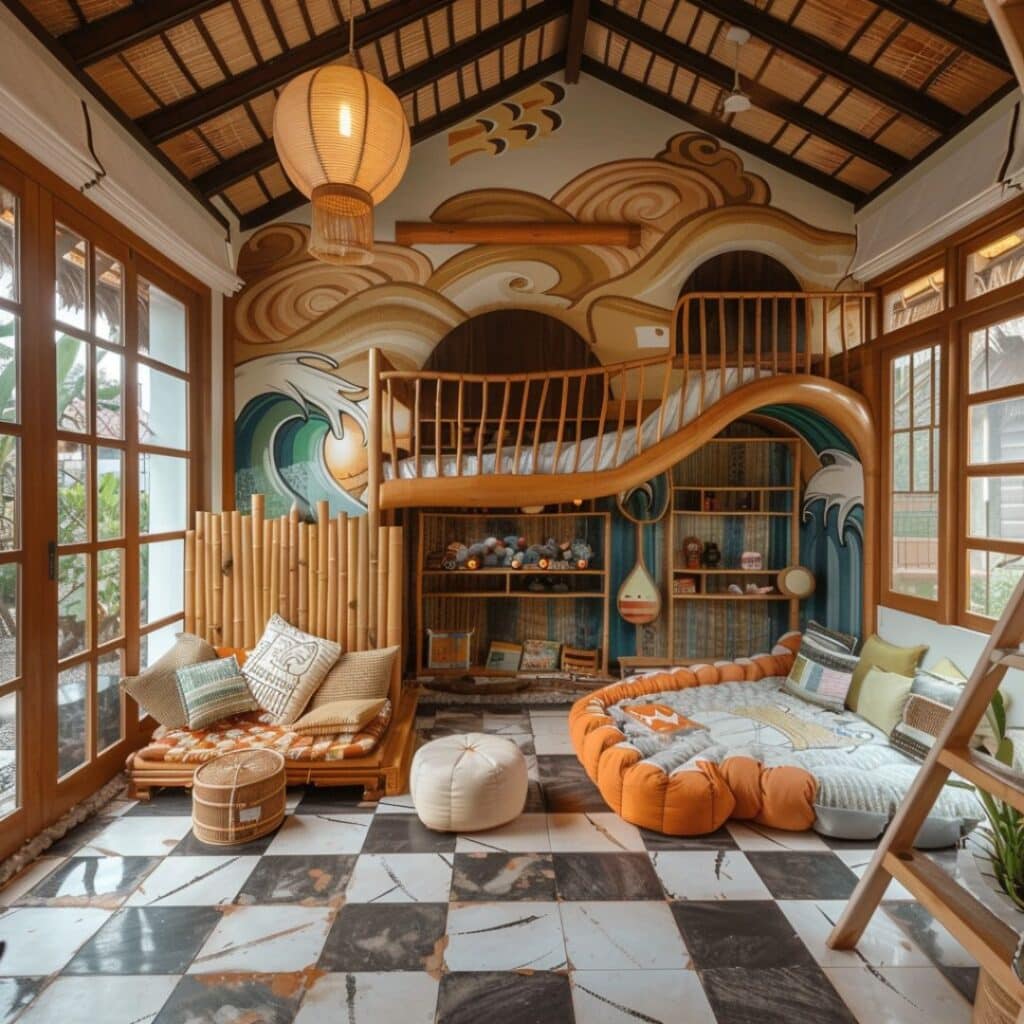
#9. Bali Home Office
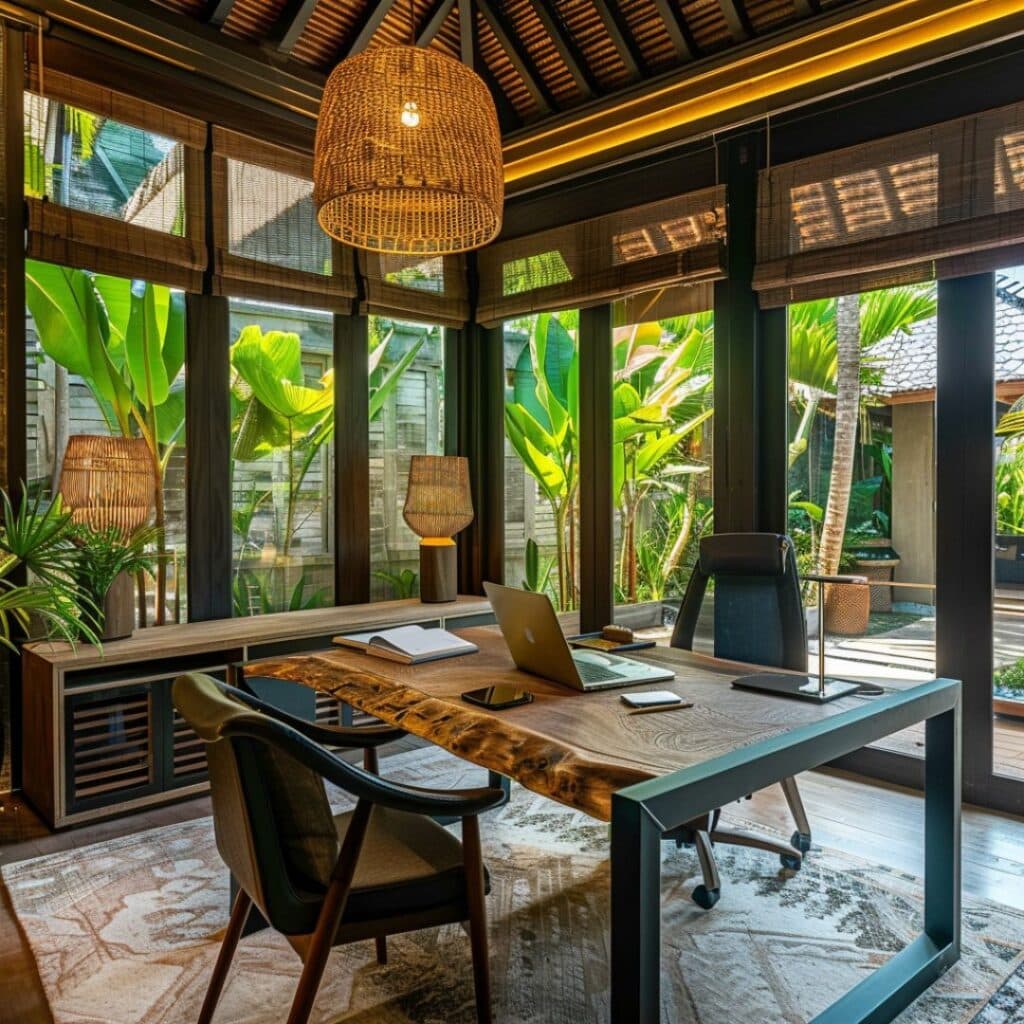
#10. Bali Guest Bedroom

#11. Bali Dining Room

#12. Bali Bedroom

#13. Bali Bathroom
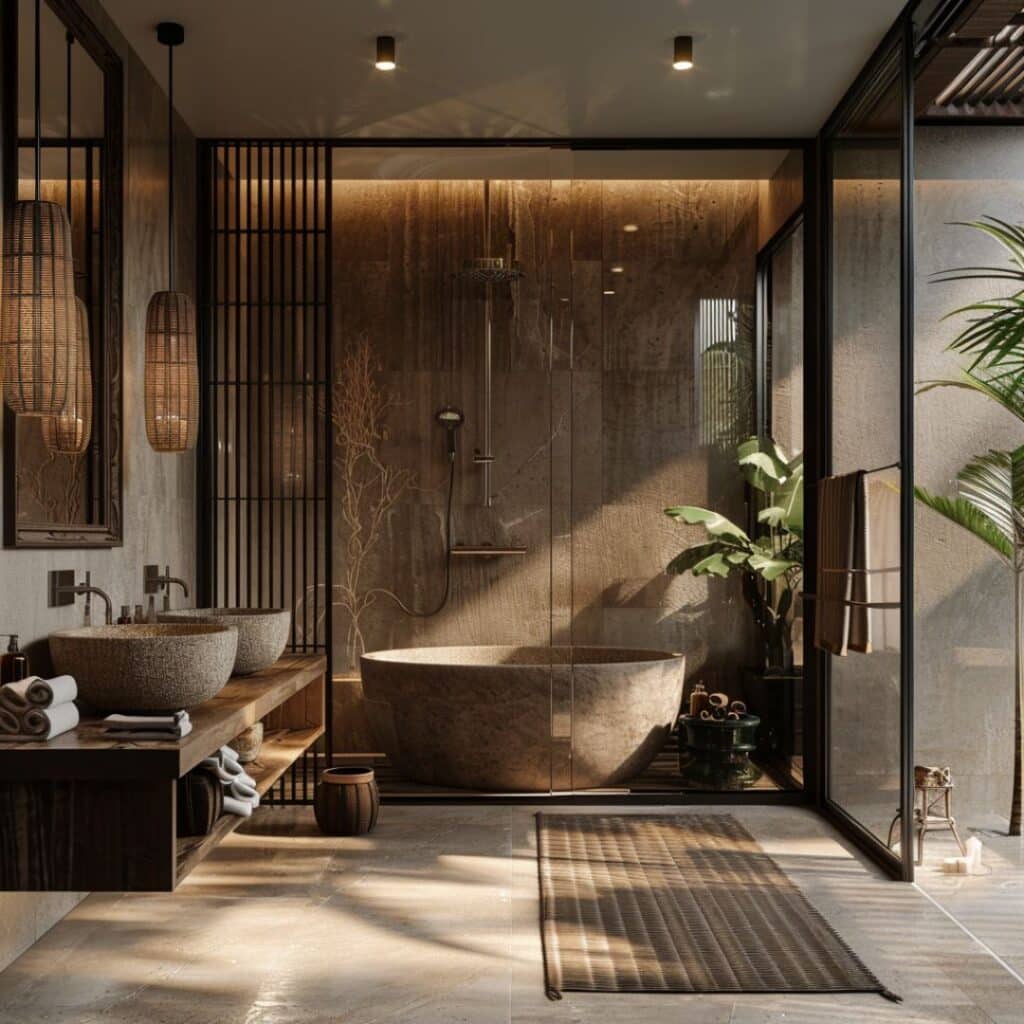
Key Elements of Bali Interior Design
Bali interior design creates tranquil living spaces by blending traditional craftsmanship with modern interior design aesthetics. Emphasize natural materials, open spaces, and traditional crafts to achieve this serene environment.
Natural Materials
Incorporate materials like bamboo, rattan, and teak wood. These elements add warmth and authenticity. Stone and clay also contribute to the organic feel.
Open Spaces
Design open layouts with minimal partitions. This enhances airflow and light, creating a spacious atmosphere. Large windows connect indoor areas with nature.
Traditional Crafts
Use handmade items such as batik textiles and carved wooden furniture. These pieces showcase Balinese artistry. Woven baskets and ceramics further enrich the decor with local charm.
Influential Bali Design Trends
Bali interior design trends focus on sustainable living and simplicity. These key trends highlight the core elements transforming spaces.
Eco-Friendly Design
Eco-friendly design emphasizes sustainability and harmony with nature. Designers use recycled materials like reclaimed wood and bamboo for furniture. Solar panels and rainwater harvesting systems often feature in environmentally-conscious homes, promoting energy efficiency.
Natural light plays a significant role, reducing dependence on artificial lighting. Large windows and open spaces allow sunlight to flood interiors, creating bright and airy atmospheres. Incorporating indoor plants further enhances the connection to nature.
Minimalist Interiors
Minimalist interiors prioritize clean lines and uncluttered spaces. Furniture pieces are functional yet elegant, often crafted from natural materials such as teak or rattan. Neutral color palettes dominate these designs, fostering tranquility.
Open layouts are common in minimalist settings, maximizing space utilization without overcrowding rooms. Built-in storage solutions help maintain order by keeping essentials out of sight but easily accessible when needed.
How Bali Culture Influences Its Interior Design
Role of Religion and Traditions
Balinese interior design deeply reflects its religious practices. Hinduism, the predominant religion in Bali, plays a significant role. Temples influence home layouts, with spaces for rituals and meditation.
Traditional ceremonies and festivals also shape interiors. Ornate carvings and statues are common. Homes often feature altars decorated with offerings and flowers.
The Influence of Nature and Geography
Bali’s natural surroundings greatly impact its design ethos. Tropical landscapes inspire indoor-outdoor living spaces. Large windows bring in abundant natural light.
Geographical features like beaches and mountains inspire materials used in homes. Bamboo, teak wood, and stone are prevalent. These elements create harmony with nature while maintaining sustainability principles.
Comparing Bali Interior Design to Other Tropical Styles
Similarities With Other Island Styles
Bali interior design shares elements with other tropical interior design styles. These include the use of natural materials like bamboo, rattan, and teak wood. Open layouts that promote airflow are common in both Balinese and other island designs.
Tropical aesthetics often incorporate indoor-outdoor living spaces. This approach maximizes the connection with nature by using large windows, verandas, and patios. Additionally, vibrant textiles and handcrafted items such as woven baskets or pottery appear frequently in various island interiors.
Unique Characteristics of Bali Design
Bali interior design has distinct features setting it apart from other tropical styles. Traditional Balinese craftsmanship plays a crucial role; intricate carvings on wooden furniture and detailed batik textiles exemplify this artistry. Hinduism influences home layouts significantly, incorporating spaces for rituals and meditation.
Balinese interiors also emphasize harmony with nature through sustainable practices. Recycled materials, rainwater harvesting systems, and solar energy solutions are common in contemporary Balinese homes. The combination of these elements creates serene yet functional living spaces that reflect local culture deeply.
Tips for Incorporating Bali Interior Design in Your Home
Choosing the Right Materials
Natural materials form the backbone of Bali interior design. Bamboo, teak wood, and rattan are frequently used to create a warm atmosphere. You can also include stone elements like volcanic rock or marble for added authenticity, often seen in Tropical Modern interior design.
Integrating Indoor and Outdoor Spaces
Bali design thrives on seamless transitions between indoor and outdoor spaces. Large windows, sliding glass doors, and open verandas facilitate this blend. Use potted plants and water features inside to mirror natural outdoor elements.
Embracing Natural Light
Natural light is vital in Bali interiors. Opt for large windows and skylights to flood your home with sunlight. This not only enhances the aesthetic but also makes spaces feel more inviting.
Adding Balinese Textiles
Balinese textiles like batik add cultural richness to your space. Use these fabrics as throw pillows, bedspreads, or wall hangings to bring a touch of Bali into your home.
Incorporating Traditional Crafts
Traditional crafts such as wooden carvings and woven baskets showcase Balinese artistry. Display these items prominently in living areas or entryways for an authentic look.
By following these tips, you can bring the serene beauty of Bali interior design into your own home effortlessly.







